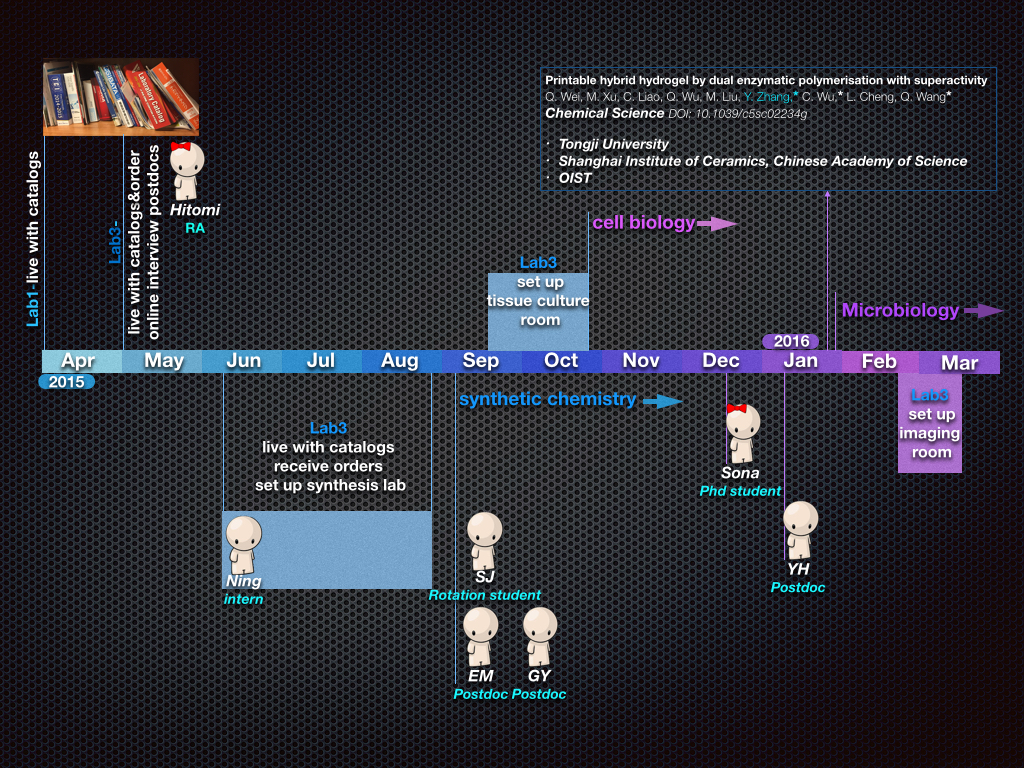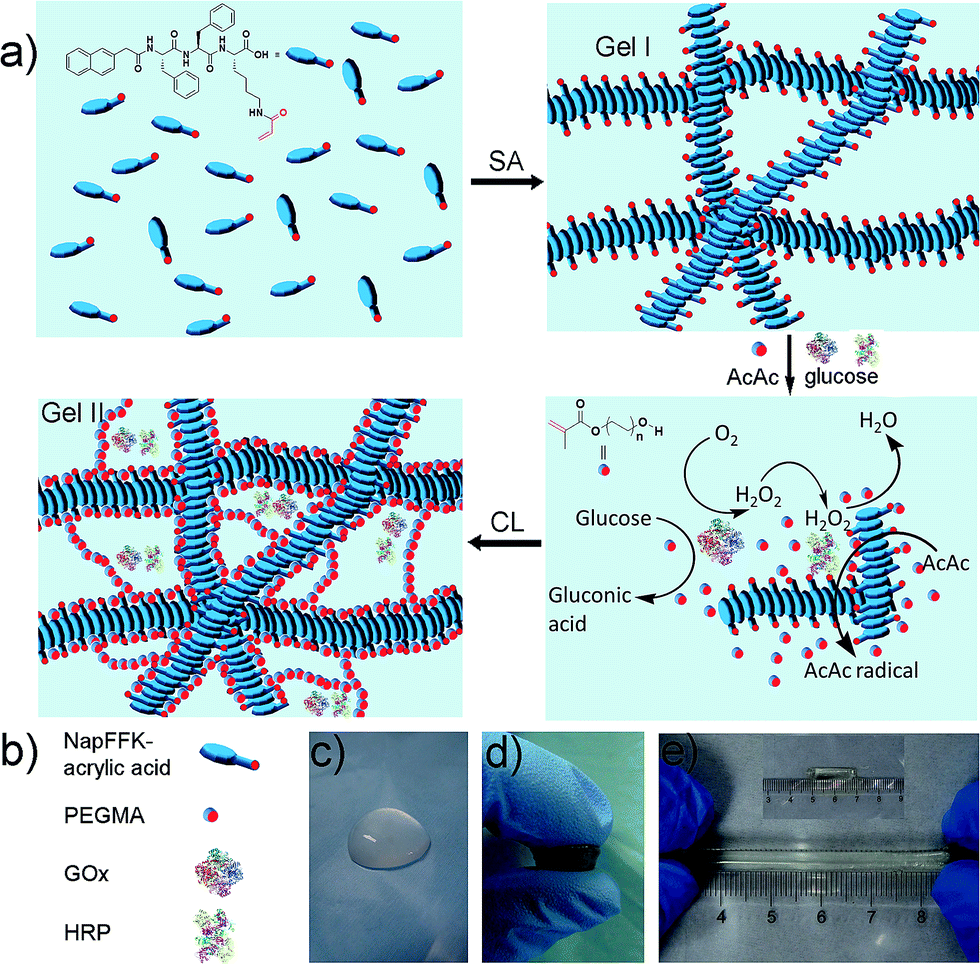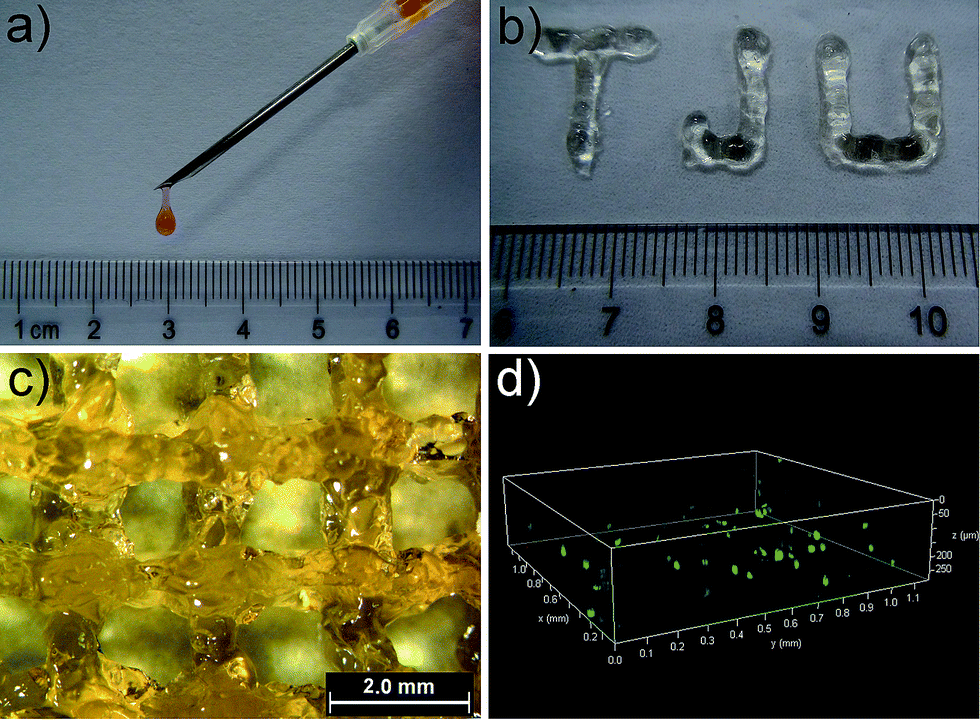FY2015 Annual Report
Bioinspired Soft Matter Unit
Ye Zhang

Abstract
Hydrogels are soft materials with distinct three-dimensional (3D) networks capturing large water content. The similarity of hydrogels to natural tissue has made them the most promising biomaterials for use in human bodies. During the past several decades, hydrogels have attracted considerable attention from scientists in different research fields. With their contributions, the research in this field has experienced significant advances both in content and in style. Organometallic hydrogels, one special category of hydrogels in which metal ions participate in the 3D network, have become one of the pioneering types of soft materials. Endowed with the unique properties of metal ions and coordination chemistry’s structural diversity, this type of material has shown great potential for intelligent materials as part of a smart future.
1. Staff
- Dr. Guanying Li, Postdoctoral Fellow
- Dr. Enming Du, Postdoctoral Fellow
- Dr. Yunhui Zheng, Postdoctoral Fellow
- Sona Roy, Graduate Student
- Shijin Zhang, Rotation Student
- Ning Zhou, Intern Student
- Hitomi Shinzato, Administrative Assistant
2. Collaborations
2.1 Printable hybrid hydrogel with superactivity
- Description: A new approach has been developed to fabricate tough hybrid hydrogels by employing dual enzyme- mediated redox initiation to achieve post-self-assembly cross-linking polymerization. The resulting hydrogel combines the merits of supramolecular hydrogels with polymeric hydrogels to achieve higher mechanical strength and porous networks. Designed 3D constructs were fabricated via in situ 3D printing. The in situ immobilized GOx/HRP in Gel II exhibited superactivity compared to free enzymes, which might be attributed to the synergistic effect of co-localized GOx and HRP minimizing the distances for mass transport between the gel and the bulk solution. This mechanically strong hybrid hydrogel maintained high reusability and thermal stability as well. In addition, in situ 3D cell culture was demonstrated, thus indicating that this biodegradable hybrid hydrogel is biocompatible with cells. The subsequent 3D cell printing further indicates that the hybrid hydrogel is a promising scaffold for bio- related applications such as biocatalysis and tissue engineering.
- Type of collaboration: Joint research
- Researchers:
- Professor Qigang Wang, Tongji University
- Professor Chengtie Wu, Shanghai Institute of Ceramics, Chinese Academy of Science
3. Activities and Findings
3.1 Functional Hydrogels

Figure 1: (a) Schematic of the preparation of the hybrid hydrogel, Gel II (SA = self-assembly, CL = cross-linking). (b) Schematic of NapFFK-acrylic acid, PEGMA, GOx and HRP. (c) Optical image of Gel I. (d) Optical image of Gel II under compression. (e) The tensile state of Gel II.

Figure 2: (a) The injectable property of Gel II (stained with Congo red). (b) The printed letters “TJU” with three layers. (c) Grids printed with three layers. (d) The printed 3D stacks of NIH-3T3 cells with FDA staining in green and PI staining in red (gridlines for x and y axis: 0.1 mm; gridlines for z axis: 50 μm).
4. Publications
4.1 Journals
- Yunhui Zheng, Guanying Li and Ye Zhang.* Organometallic Hydrogels. ChemNanoMat, doi:doi: 10.1002/cnma.201600040 (2016).
- Qingcong Wei, Mengchi Xu, Chuanan Liao, Qing Wu, Mingyu Liu, Ye Zhang,* Chengtie Wu,* Liming Cheng and Qigang Wang.* Printable hybrid hydrogel by dual enzymatic polymerization with superactivity. Chemical Science, doi:doi: 10.1039/c5sc02234g (2016).
4.2 Books and other one-time publications
Nothing to report
4.3 Oral and Poster Presentations
- Enming Du, Ye Zhang*. Ru(II) Complex for Photo-induced Endosome/Lysosome Escape. The 96th Annual Meeting 2016 of The Chemical Society of Japan (CSJ), Kyoto, Japan, 24/03-27/03 (2016).
- Guanying Li, Ye Zhang*. Enzyme-assisted Dynamic Self-assembly of Hydrogelators on Cancer Cell Membrane, The 96th Annual Meeting 2016 of The Chemical Society of Japan (CSJ), Kyoto, Japan, 24/03-27/03 (2016).
- Shijin Zhang, Ye Zhang*. Dynamic Self-assembled Chiral Molecules for Active Liquid Crystalline Material. The 96th Annual Meeting 2016 of The Chemical Society of Japan (CSJ), Kyoto, Japan, 24/03-27/03 (2016)
5. Intellectual Property Rights and Other Specific Achievements
Nothing to report
6. Meetings and Events
6.1 Seminar Title in Full
- Nothing to report
6.2 Something Group for Something on Something (SG2S)
- Nothing to report
7. Other
Nothing to report.



